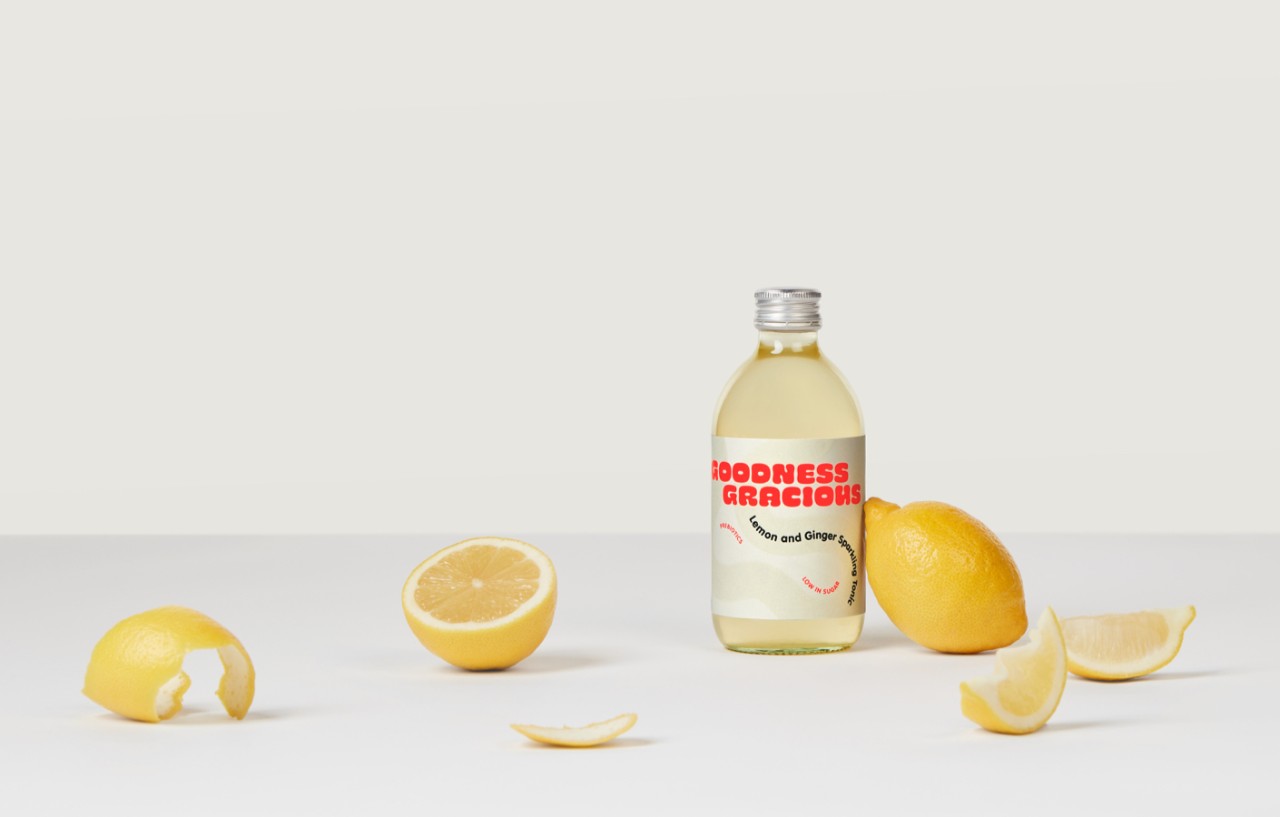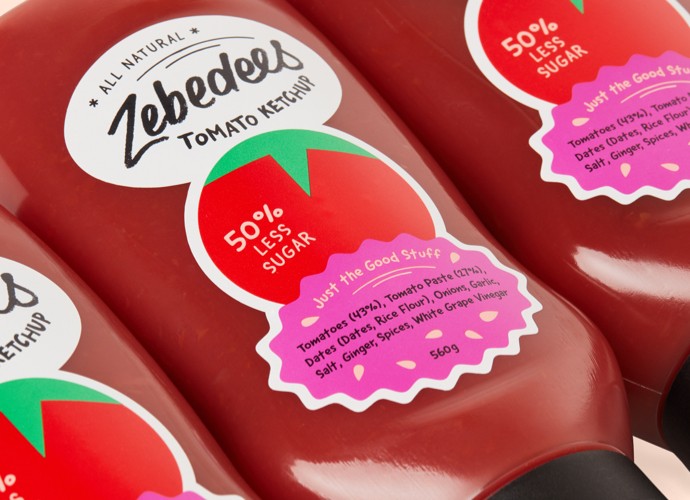Prebiotics

Material
rCrush Citrus
This is part of a series of hypothetical brands that explore sustainable product and design in the food industry.
In the last few years, gut health has catapulted into the spotlight as a popular trend in the health food and beverage industry. It’s a well-researched fact that a healthy microbiome directly correlates to a healthy body. This information has gone mainstream, creating an exciting market for consumers that seek to have a more active relationship to their gut (and bodies).
Generally defined, prebiotics are nutrients that keep the bacteria in our digestive system healthy. Often added to yogurts, carbonated drinks or taken as supplements, prebiotics offer a direct line to healthy digestion and an overall happy gut.
Inspired by the growing market of health-focused carbonated beverages, Goodness Gracious is a lemon and ginger sparkling tonic that combines citrus, botanical extracts, prebiotics and fiber.



Playful, inviting and dynamic, the Goodness Gracious label design finds inspiration from the natural curvatures of our digestive tract. Taking the shape of a generously curving graphic line, this embossed form runs throughout the label area as a commanding and memorable design motif. Supplementary descriptive text like “good for ya gut” communicate the product’s health benefits while carrying over the playfulness of the label’s overall design.
Additionally, the brand name is rendered in a font featuring rounded idiosyncrasies and a retro nod to a “Flower Power” era of healthy eating.
Designer Rebecca Worth jumped at the opportunity to pair the rCrush Citrus label material—and its naturally soft yellow coloring and evident fibrous textures—with a fitting product: “The label had a distinct character so it made sense to celebrate the material by pairing its citrus ‘DNA’ with sustainable issues surrounding gut health. It was about creating a visual space for a weaving graphic that was compositionally engaging.”
The rCrush Citrus label material is a true testament to sustainable research and production. Made of 40% post consumer waste and 15% citrus pulp—a byproduct of juice production—its natural coloring can be used as a point of leverage to effectively tie material and visual identity to a compelling brand story.




